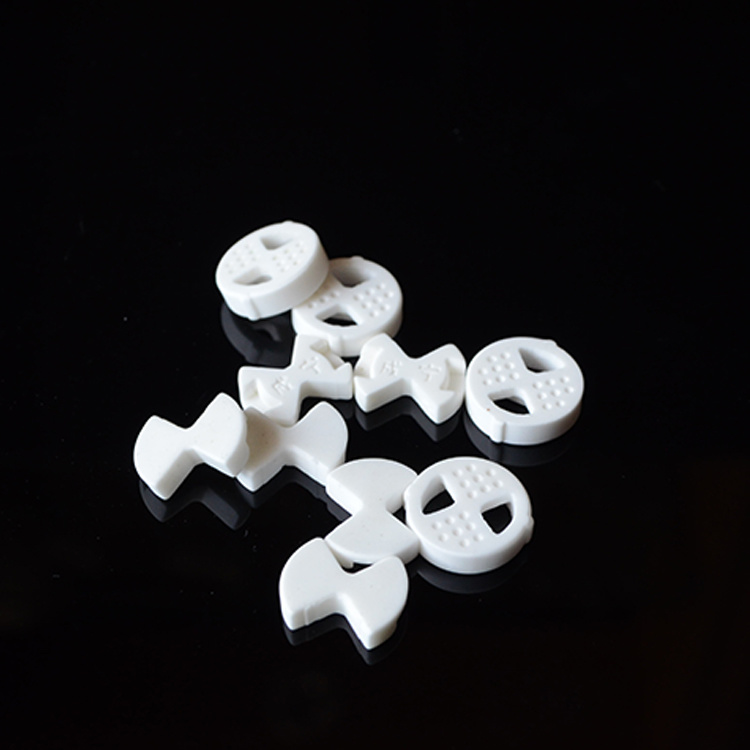
Why Fire Assay Crucibles are Vital in Mineral Assaying
Time:
2023-09-28 09:41
Source:
Introduction: Understanding the Role of Fire Assay Crucibles in Mineral Assaying
When it comes to determining the composition and purity of minerals, accurate assaying is of utmost importance. Fire assay, a well-established method, involves the use of fire assay crucibles to achieve precise results. In this article, we will explore why fire assay crucibles are vital in mineral assaying, their types and applications, factors to consider for optimal performance, and provide a step-by-step guide to the fire assay process.
What are Fire Assay Crucibles?
Fire assay crucibles are specialized vessels or containers made from various materials that can withstand high temperatures. These crucibles are designed to safely hold and contain samples during the assaying process. They play a crucial role in ensuring accurate analysis and the extraction of precious metals from raw mineral samples.
The Significance of Fire Assay Crucibles in Mineral Assaying
Fire assay crucibles are vital in mineral assaying for several reasons. Firstly, they provide a controlled environment for the fusion of the sample with fluxes, allowing for the separation of precious metals. Crucibles also ensure the accurate determination of the composition and purity of minerals by containing the sample during the high-temperature process. Additionally, they contribute to the repeatability and consistency of results, making them indispensable in the field of mineral assaying.
Types of Fire Assay Crucibles and Their Applications
1. High Alumina Crucibles for High-Temperature Assays:
High alumina crucibles are suitable for assays requiring high temperatures. They have excellent thermal shock resistance and chemical stability, making them ideal for assaying precious metals like gold and platinum.
2. Clay Graphite Crucibles for General Purpose Assays:
Clay graphite crucibles are versatile and commonly used in general-purpose assaying. They offer good thermal conductivity and are suitable for a wide range of minerals, including base metals like copper and lead.
3. Silicon Carbide Crucibles for Specialized Applications:
Silicon carbide crucibles are preferred for specialized applications, such as assaying refractory metals. They can withstand extreme temperatures and are chemically inert, ensuring accurate results for complex mineral samples.
Crucible Selection: Factors to Consider for Optimal Performance
Choosing the right crucible is crucial for optimal performance and accurate mineral assaying. Consider the following factors:
1. Crucible Size and Capacity:
Select a crucible size and capacity appropriate for the sample size to ensure sufficient space for the fusion process.
2. Chemical Compatibility:
Ensure the crucible material is chemically compatible with the sample and fluxes used, preventing unwanted reactions that could affect assay results.
3. Thermal Shock Resistance:
Crucibles with high thermal shock resistance minimize the risk of cracking or breaking during the heating and cooling processes, ensuring reliable and repeatable results.
4. Crucible Lifespan and Cost-effectiveness:
Evaluate the lifespan and cost-effectiveness of different crucible materials to choose an option that meets your specific requirements.
Crucible Preparation: Crucial Steps Before Assaying
Proper crucible preparation is essential to ensure accurate and reliable mineral assaying results. Consider the following steps:
1. Cleaning and Preheating Crucibles:
Thoroughly clean crucibles to remove any contaminants that could affect assay results. Preheat the crucibles to eliminate moisture or residual impurities.
2. Crucible Conditioning for Consistent Results:
Condition the crucibles by heating them to a specific temperature and maintaining it for a specified duration. This process stabilizes the crucibles and ensures consistent results.
3. Crucible Handling and Safety Measures:
Follow proper handling and safety measures when working with fire assay crucibles to prevent accidents and ensure personal safety.
Fire Assay Process: A Step-by-Step Guide for Accurate Mineral Analysis
1. Sample Collection and Preparation:
Collect representative samples and prepare them by crushing, pulverizing, and homogenizing to ensure accurate analysis.
2. Fusion: Melting the Sample with Fluxes:
Place the prepared sample and appropriate fluxes into the crucible. Heat the crucible to high temperatures to melt and fuse the sample with the fluxes.
3. Cupellation: Separating Precious Metals:
After fusion, cupellation involves heating the crucible under controlled conditions to separate base metals from precious metals.
4. Collection and Weighing of Precious Metal Beads:
Collect the precious metal beads formed during cupellation, and weigh them to determine the concentration and purity of precious metals in the original sample.
FAQs About Fire Assay Crucibles Answered
1. How long do fire assay crucibles last?
Fire assay crucibles have varying lifespans depending on the material, usage, and maintenance. High-quality crucibles can last for multiple assays if handled properly.
2. Can fire assay crucibles be reused?
In some cases, fire assay crucibles can be reused after proper cleaning and inspection. However, it is essential to ensure no contamination or degradation affects subsequent assays.
3. What is the recommended temperature for assaying?
The recommended temperature for assaying depends on the specific mineral and desired outcomes. It is crucial to follow established procedures and temperature guidelines for accurate results.
4. Are there any safety precautions when using fire assay crucibles?
Yes, safety precautions include wearing appropriate protective gear, handling hot crucibles with care, and working in a well-ventilated area to prevent exposure to harmful fumes.
5. Can different crucible materials affect assay results?
Yes, different crucible materials can have varying effects on assay results. The choice of crucible material should be based on compatibility with the sample and the desired analysis.
Conclusion: The Crucial Role of Fire Assay Crucibles in Accurate Mineral Assays
Fire assay crucibles play a vital role in mineral assaying, ensuring accurate analysis, and the extraction of precious metals. Choosing the right crucible, properly preparing it, and following established procedures are essential for obtaining reliable and repeatable results. By understanding the significance of fire assay crucibles and their role in the assaying process, you can confidently perform mineral assays with precision and accuracy.
fire assay crucibles for mineral assaying

